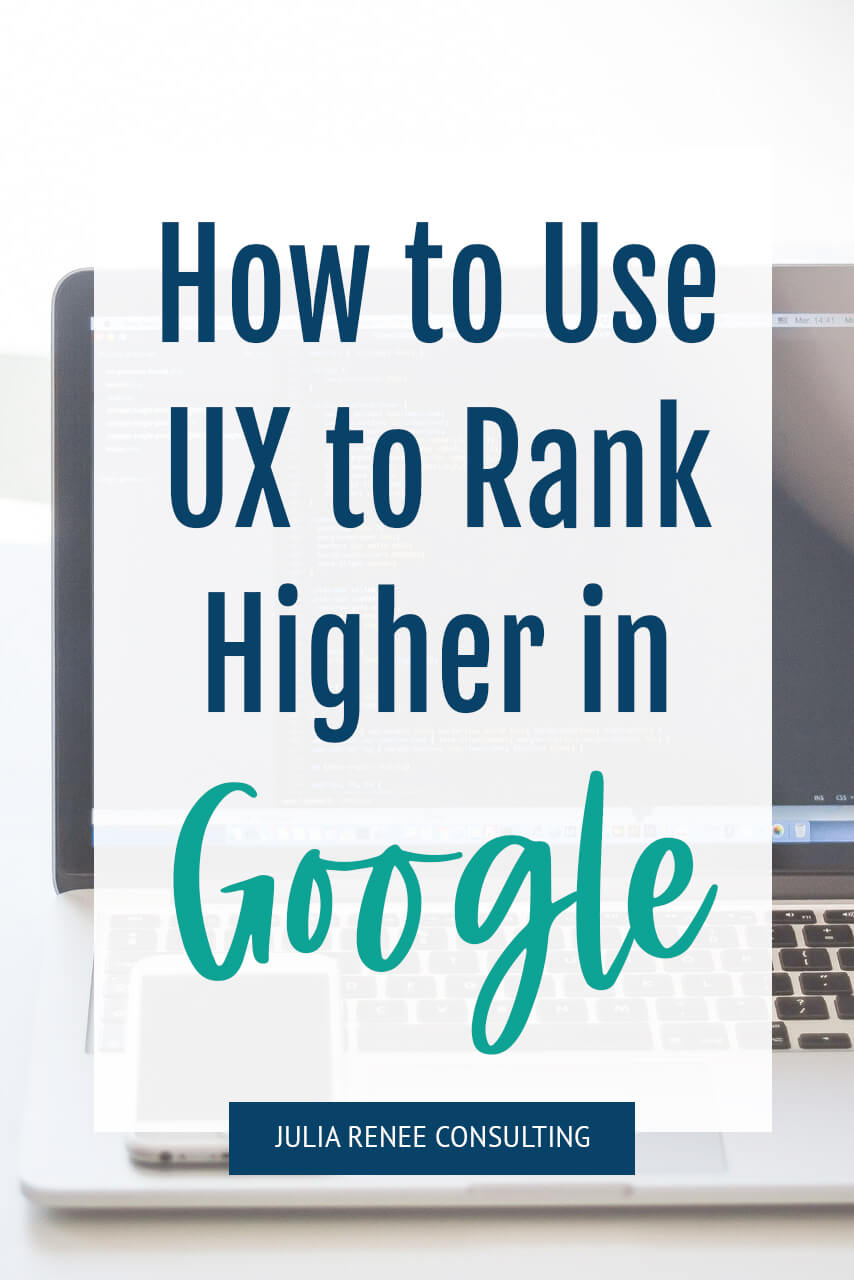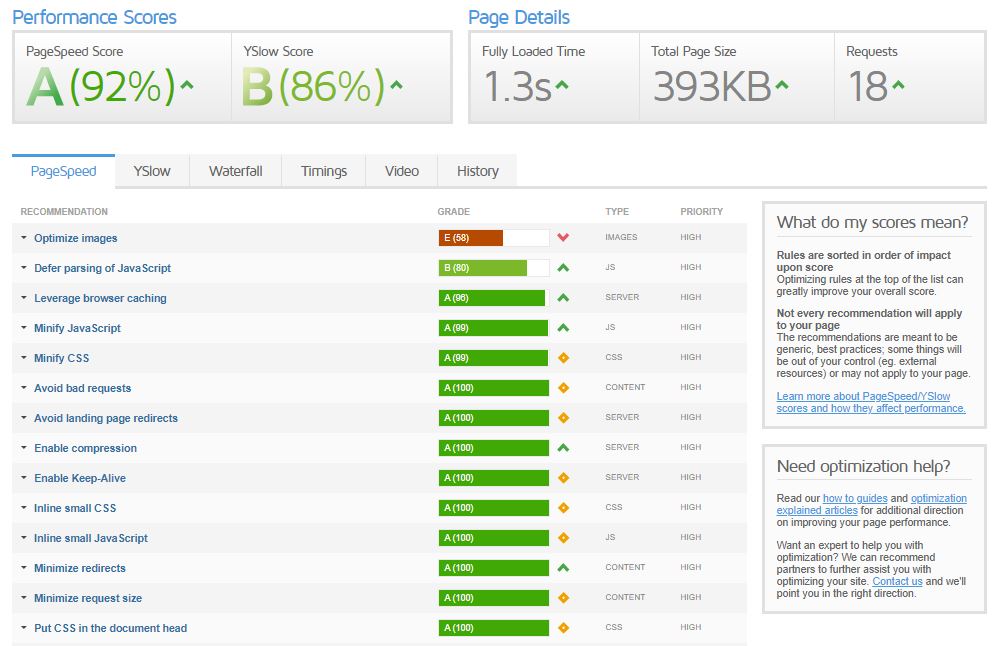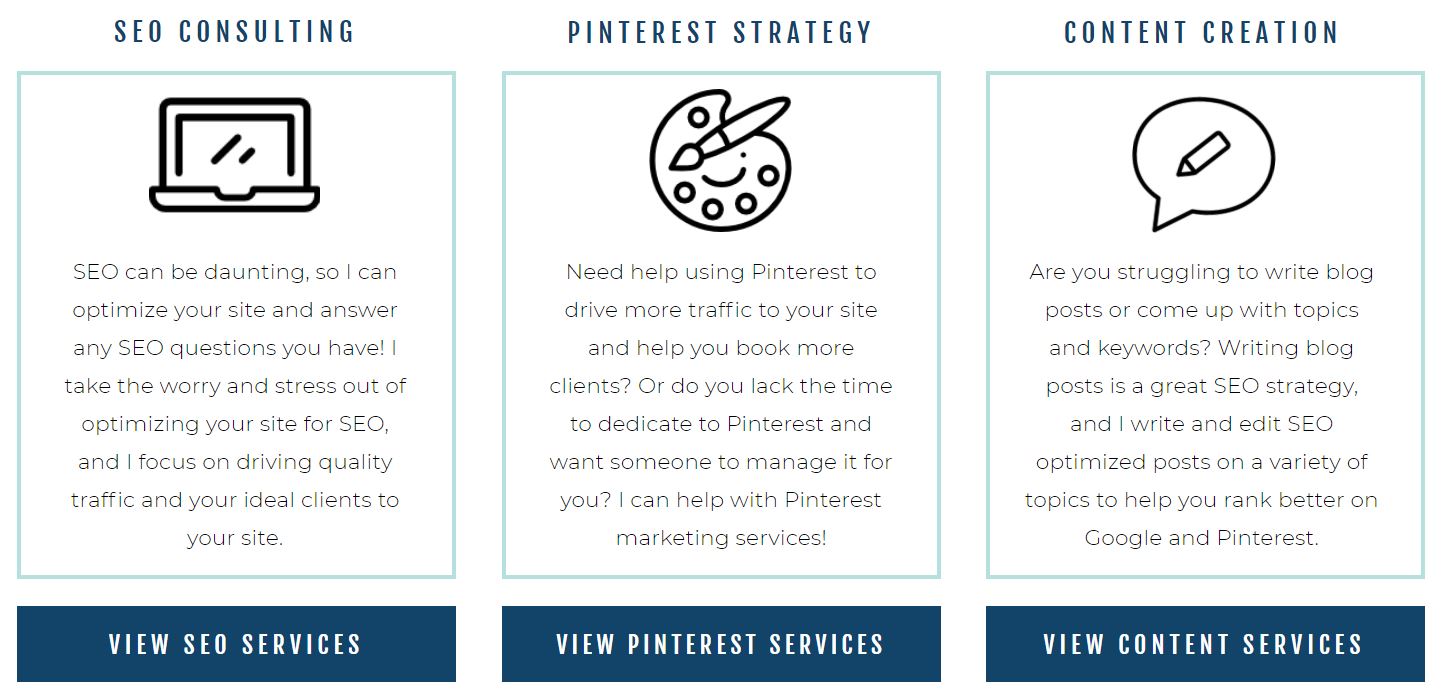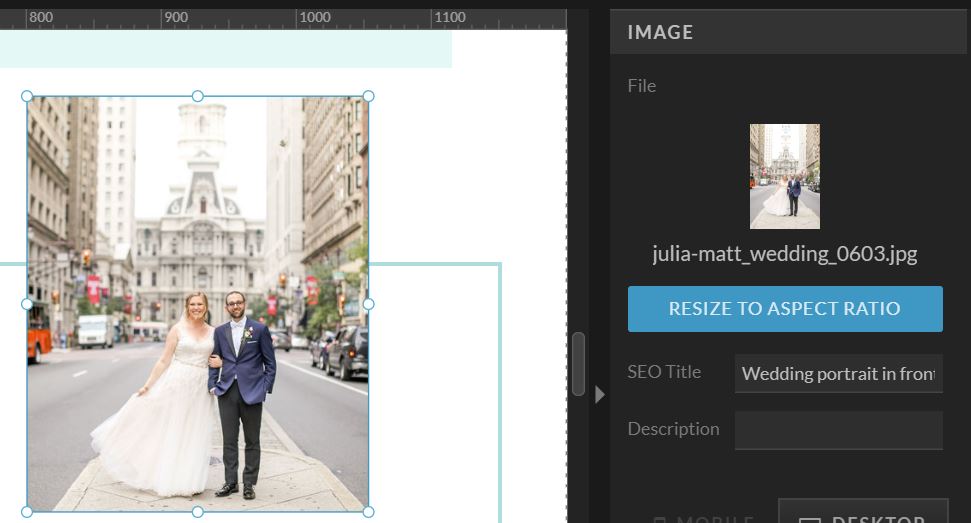When I work with my SEO clients, I focus both on helping their sites rank higher in Google and on their site user experience because I don’t want them ranking well in Google just for the sake of ranking well. I want them to rank well AND have an awesome site set up to help convert visitors to clients and customers!
User experience and SEO go hand-in-hand for reaching the right people and converting them to clients, and Google is also focusing more and more on user experience as a ranking metric. But I keep seeing people overlooking their site user experience in favor of focusing on things like keywords and branding. Don’t get me wrong, both are very important for businesses, but having a great user experience is how you can really convert your site visitors!
There are many things to consider for user experience, but these are the top things I see overlooked for user experience and SEO that can really help you rank higher in Google, keep people on your site longer and clicking around to more pages, AND convert site visitors to clients and customers.
Site speed
Site speed is sooooo important for user experience (UX) and SEO! Site speed is a big factor in ranking on Google for a few different reasons. If a site takes too long to load, people won’t stick around and wait for it to load, so it doesn’t look good to Google when people are leaving a website after a couple of seconds. If you have tons and tons of pages and photos and your site is really slow, Google may not have enough time in its crawl budget to read your entire site.
And site speed is super important for UX. How many times have you visited a site that takes more than a couple of seconds to load, so you just leave? You don’t want people doing that on your site!
You only have a few seconds to capture people’s attention and get them to stay, so you need to make sure your site is as fast as possible. That way people will stay longer on your site, be more inclined to visit more pages/posts/products, and be more likely to purchase your products (or even multiple products!), sign up for your email list, or inquire about your services.
So site speed is incredibly important, so make sure you site is fast! I recommend testing your site speed in free tools like Pagespeed Insights (tests both desktop and mobile speeds) and GTMetrix. They will tell you exactly what is slowing down your site (I see photos, videos, Javascript, and caching issues most often) so you can get it fixed and get your site faster.
Menu bar and navigation
So remember how you only have a few seconds to get people to stay on your site? The same thing applies to the navigation of your site! If someone is searching for a specific page but they can’t find it in your menu bar or you just have way too many things to choose from, they could lose interest and leave your site.
You can fix this by making sure things are named as clearly as possible and keeping your main menu bar short.
So go through your menu bar with the mind of your ideal client/customer. Is anything unclear? (Such as hiding your pricing under something like “Info” or calling your blog something like “Thoughts”). Can you immediately find pages like About, Services, Contact, or specific product categories?
Do you have more than 7 options in your main menu bar? Can you move anything into a dropdown menu under one of the main pages? Can you consolidate any pages?
It may seem like a small change, but making your menu bar as easy to navigate as possible can really improve your site UX and help keep people on your site longer.
CTAs
Calls-to-action (CTAs) go along with site navigation, and it’s one of the most overlooked things I see on sites. Imagine if you’re talking with someone and you tell them all about how amazing your services or products are and how they could change their life, but you stop talking and don’t tell them how to get them. That’s what it’s like having a Service page with no CTA to lead people to your contact or inquiry page!
If someone is interested in your service but then has no idea how to learn more or book your services, you could be losing out on lots of potential clients. So make sure you have at least one clear, eye-catching, colorful CTA on EVERY page (if that seems like overkill, just remember that the majority of people aren’t going to visit all of your pages).
Buttons get a lot more clicks than just hyperlinked text, and having action-oriented CTAs like “Click here for more information” are more clear and get more clicks than something like “Information.”
So go through your site and add or update CTAs to help improve your UX and SEO!
Accessibility
Accessibility, UX, and SEO all work together! Erin from Mabely Q is an amazing accessibility expert with lots of helpful resources, and I’m always learning something new from her so I recommend following her.
Accessibility for your website means making it as usable as possible for everyone, including people who are visually and hearing impaired. This includes making your text big enough for everyone to read and not using really scripty fonts everywhere, having alt tags on all of your images, choosing colors that are easy to see and read (please no yellow text on a white background!), adding subtitles to any videos on your pages, and much much more.
Erin has a whole course on making your website and social media accessible, and I highly recommend it!
Mobile site
I see so many people only paying attention to how their site looks on desktop, but how well does it work on mobile? Google is prioritizing mobile optimization more and more AND people are using their phones to access sites more, so don’t neglect your mobile site!
First, check how many people are already visiting your site on their phones in Google Analytics (Audience-Mobile-Overview), and you might be surprised how many people visit your site on their phones. More than half of my site visitors on this site are on their phones, but for my travel blog, more than double of my visitors use their phones!
Compare things like the bounce rate, pages/session, and average session duration between your desktop and mobile visitors. If there is a huge difference on how long people are staying on your site on their phones, you definitely need to work on your mobile site!
Second, speed up your mobile site. Use Pagespeed Insights to compare your desktop and mobile site speed and see what needs to be improved on your mobile site specifically.
After checking the data and speeding up your site, I want you to visit your site on your phone and get a feel of the user experience and SEO for yourself. If you have a pop-up, can you close out of it easily? Is the text big enough to be read by everyone? Is anything getting cut off or formatted weirdly on a small screen? Are the paragraphs small and spaced out so people don’t just see giant paragraphs of text that’s too overwhelming to read? Are all of your buttons and any hyperlinked text easy to click on? Can you easily open (and close) your menu?
If your mobile site doesn’t look or work the way you thought it was, I recommend focusing on optimizing your it! If you really just need to start over from scratch (to be honest, that’s what I needed to do a year ago!), I recommend checking out Showit. It’s a website platform that’s super easy to use, and one of the coolest things about it is that you have full control over the mobile site design! It can even look totally different from your desktop site if you want.
Setting up a whole new site can be hard and time-consuming, but it is so worth it to improve your site’s SEO and UX (and I know lots of amazing website designers if you need a referral, so feel free to ask).
So those are the 5 things I see overlooked all the time with user experience and SEO, and focusing on them can make a big difference in helping you rank higher in Google AND convert more visitors to clients. I see it helping my clients’ businesses all the time!
If this seems overwhelming or you want even more insight into your site’s user experience and SEO, book an SEO audit with me today! My SEO audits analyze everything from your site’s technical SEO to your website copy to your user experience and navigation with a full report with recommendations on how to improve your site to rank higher in Google. If you’re ready to get started, contact me today to set up a call!






Thank you for this post on how to get my Site Rank Higher in Google
I hope it helps! 🙂